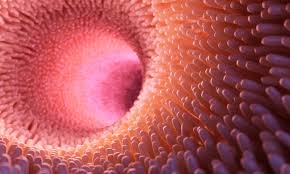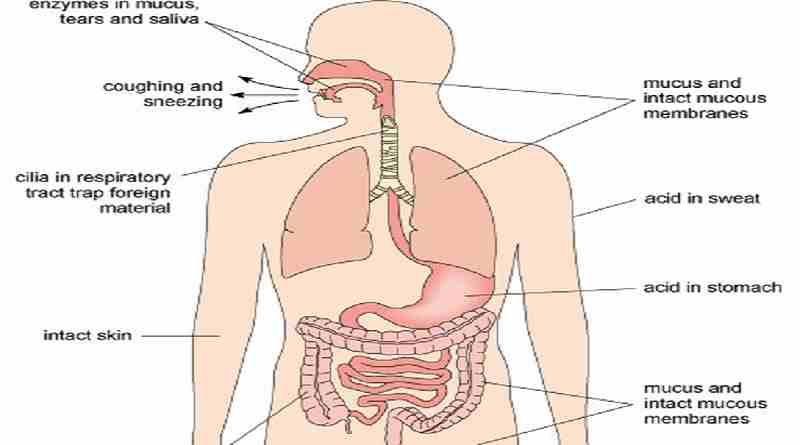Human Body Barriers
Bacteria and viruses are constantly attempting to enter inside the body. The human body, luckily, is well-protected. The body’s surface, which serves as a barrier to germs, is the first line of protection against invaders. The fragile surface of your eyes, as well as the soft tissue covering your mouth, nose, throat, and stomach, are all part of the surface.
Inner human body barriers
Basically germs can enter in your body by the following way-
- Through the air you breathe, and
- Through the food you eat.
The cells lining inner passages such as the throat and airways are lined together to form a germ-proof wall that is coated in protective fluids such as saliva, mucus, and stomach acid to prevent these germs from spreading further.
The Salivary glands make saliva, which contains chemicals that kill bacteria.

A sticky fluid called mucus covers the inner walls of airways leading to the lungs. Germs that land on mucus get stuck. Tiny hairs beat back and forth to push the mucus up to the throat, where it gets swallowed.
Fever
Infection is happens when infectious bacteria or viruses spread within the body. Infection causes your body to heat up, raising your temperature above the normal 37 degrees Celsius (98.6 degree Fahrenheit). Fever is a reaction that helps to prevent germs from multiplying. It also increases the activity of white blood cells that kill germs.

Discoveries
Louis Pasteur (1822-1895), a French scientist, was the first to recognize that disease can be caused by microscopic organisms called germs. Prior to Pasteur, most people believed that diseases were divine punishment.

Fact
All bacteria aren’t all bad. Millions of helpful bacteria live on your skin, helping to protect you from disease-causing bacteria.
Must Read – Human Body Barriers 2
